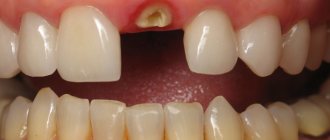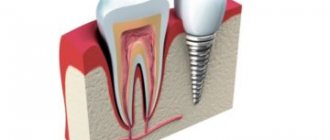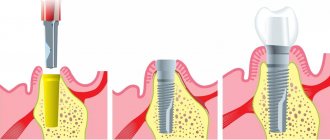Scientists have proven that metal allergies are an extremely common skin disease and occur in approximately 10% of people. This diagnosis, you see, sounds very exotic. But still, it is the above-mentioned allergy to metal that brings a lot of unpleasant sensations. Gold and silver, a metal belt buckle, money coins, fasteners on fashionable jeans - all this can cause inconvenience and significant trouble for anyone. Where does this disease come from? Let's try to figure it out!
Allergic contact dermatitis: what is it?
The above disease is called the disease of modern times. Of course, pure silver and gold do not cause allergies. But today, for the purpose of enrichment, these products are increasingly being produced with impurities of metals that cause allergic contact dermatitis. This:
- nickel;
- cobalt;
- gallium;
- chromium;
- molybdenum;
- beryllium.
Allergens can accumulate in the body over a long period of time and suddenly cause an unwanted “conflict situation” with the skin. In addition to unpleasant signs on the skin, allergic contact dermatitis can be accompanied by headaches, swelling, and problems with the functioning of the gastrointestinal tract.
Allergy to metal: causes
According to statistics, residents of industrial cities are more susceptible to the above disease than residents of suburban areas or rural areas.
Interestingly, a metal allergy may not show its symptoms for years. Allergen slowdown is often caused by the following factors:
- state of the immune system;
- activity of the allergen irritant;
- patient's age;
- individual nature of sensitivity to the allergen.
The reasons that cause allergic contact dermatitis are primarily prolonged contact with irritant metal. The cells of the body, under the influence of this substance, change their chemical composition over time. Then they begin to be perceived by the human body as harmful, and a defensive reaction to them arises.
Experts note that another important reason for the occurrence of metal allergies is the weakening of the body due to frequent stress, overwork, and irritability. It is these phenomena that create excellent preconditions for the development of the above disease.
The most allergenic metals
Hypersensitivity does not occur to all elements from the metal group. A person may not realize that he received irritation from metal. After all, these chemical elements are contained in dishes, furniture, paints, medicines, and food.
Nickel
Used in the manufacture of anti-corrosion coatings and paints. Available in jewelry. If you are allergic to this metal, you should buy jewelry only of the highest standard; remove it when swimming or washing dishes.
Often used in dentistry. Fillings are made on its basis. Allergy to zinc is rare.
Aluminum
Many dishes are made using this metal. Persons who have prolonged contact with these products, such as cooks, are at greater risk of allergies. If there are no utensils made of this metal in the kitchen, then modern housewives often use baking foil; it is made of aluminum.
Cobalt
Used in the manufacture of cosmetics and hair dyes. Contained in sea fish.
Used in the production of coins and jewelry. The alloys are used in dentistry. An allergy to copper can have serious complications when placing prostheses and implants.
Symptoms of allergic reactions to metal
An allergy to metal on the skin has the following symptoms:
- unbearable itching;
- temperature increase;
- rash on the skin;
- keratinization of the upper layer of the epidermis and skin peeling;
- the formation of redness, which often resembles a burn in its appearance.
If the symptoms of the above disease are identified in a timely manner and a course of therapy is not started, then over time, an allergy to metal only aggravates the patient’s health situation.
A hidden threat to the human body in this direction is posed by such clothing items as bra clasps, metal buttons and fasteners.
Carrying out diagnostics
An allergist clarifies the diagnosis. Often a dermatologist refers him to him because he cannot identify the cause of the symptoms. Metal allergies are difficult to identify and symptoms are similar to food intolerances. Only hypersensitivity to nickel has specific features.
In the case of metal allergies, the reliability of laboratory tests is very low. Studying the medical history, interviewing the patient, and indirect symptoms of the disease play an important role. The localization of irritation will help suggest skin contact with parts of clothing or jewelry. A visit to the dentist or the presence of certain foods in the diet may also indicate the use of some metal element.
Allergy tests cannot be performed. No such specific skin examinations have been developed for this type of intolerance. You can use a provocation test, when the patient comes into contact with a certain metal for several hours, then the result of this interaction is assessed. An elimination test can be used. To do this, exclude foods with a high content of metal ions of one type from consumption, and observe whether the patient feels better.
Prosthetics and allergic reactions
Allergies to metals in dentistry are common. It manifests itself with the following symptoms:
- the appearance of signs of stomatitis;
- regular pain in the mouth;
- the presence of a metallic taste in the mouth;
- observation of redness and erosion of the tongue;
- inflammation of the gums and lips.
Therefore, when dentists detect an allergy to metal in a patient, they use special metal crowns: zirconium-ceramic, gold-ceramic, titanium-ceramic. The first material is very heavy. The second two are very expensive. But when there is no way out, dentists insist on using them, and then the patient has to agree to such inconveniences.
Sometimes, dentists note, an allergy to metal can be caused by the fact that there are several types of such material in the mouth, between which a kind of “conflict” may arise over time. Therefore, doctors in this category try, using special devices, to timely determine the patient’s tendency to such phenomena even before the start of prosthetics.
Allergy to metal: treatment
The symptoms of the above disease can be successfully eliminated with the help of medications. Antihistamine medications include:
- "Diphenhydramine";
- "Diazolin";
- "Suprastin";
- "Zodiac";
- "Tavegil".
Experts warn: using the above medications on your own without a doctor’s prescription is dangerous to your health! Only a doctor can correctly determine the true causes of allergic contact dermatitis and select the necessary dosage of the remedy, taking into account the individual characteristics of the individual patient’s body.
The role of proper nutrition in allergic reactions to metal
When observing the symptoms of the above disease, special attention should be paid to the correct preparation of your daily diet. Nutrition for allergy sufferers plays a vital role. First of all, experts strongly recommend not to eat foods that can cross-react with such an irritating allergen as nickel.
A short list of ingredients that it is advisable to exclude from the diet for people prone to metal allergies:
- mushrooms;
- herring;
- onion;
- asparagus;
- spinach;
- tomato;
- legumes;
- zucchini;
- pears;
- raisin;
- nuts;
- flour products.
It is also important not to cook food in nickel dishes, because the accumulation of the above metal in the body of this category of people is strictly contraindicated. In addition, it is recommended to refrain from using both industrial and home-made canned food.
Treatment methods
When an allergy to metal occurs, treatment should be in compliance with the following rules:
- 1. Avoid contact with objects containing metal that causes allergies. This is the most effective method of combating this type of allergy, despite the fact that it is very simple to do. If you are forced to come into contact with metal objects (for example, at work), then you should get gloves and wear protective clothing.
- 2. Carry out activities to strengthen the immune system. These include: a special diet with a high content of fresh vegetables and fruits, hardening, physical exercise, fresh air.
- 3. After consulting a specialist doctor, use glucocorticoids (fenistil gel, fluorocort, flucinar, etc.), which prevent the development of the inflammatory process, and antihistamines (zodiac, suprastin, tavegil, diazolin, etc.), which suppress the effect of histamine. The amount of this substance increases when an allergen enters the body, which causes various negative reactions in the body. These modern drugs are safe and have virtually no side effects.
- 4. Maintain hygiene of the affected areas in order to avoid even greater inflammation.
Traditional methods of treating allergic reactions to metal
Our grandmothers, of course, did not know what diagnosis and homeopathy for metal allergies were, but they knew how to treat it perfectly.
Therefore, Russian healers always have in their medicine cabinets several effective methods that can eliminate the symptoms of the above disease. Alternative medicine healers suggest treating metal allergic dermatitis with the following remedies:
- use lotions made from natural fresh cucumber or apple juice (products must be grown at home);
- apply compresses from freshly squeezed potato juice;
- apply homemade fatty sour cream or butter to the affected areas of the skin;
- use tinctures of St. John's wort or oak bark.
But it should be remembered that before using the above methods to treat allergic dermatitis to metal, it is important to consult with an experienced specialist. After all, any herb can aggravate your health, since it can be your potential allergen.
Treatment tactics
The main directions of treatment for allergic reactions are approximately the same - you need to stop contacting the element that causes a negative response from the body, and carry out symptomatic treatment.
Negative manifestations are alleviated by taking antihistamines. Usually prescribed are Tavegil, Zodak, Diazolin.
To restore the skin to areas of irritation, it is recommended to apply special ointments:
- Retinol.
- Lorinden.
- Fluorocort.
If suppuration occurs on the skin in areas of irritation due to infection during scratching, antimicrobial drugs are used. For severe irritation and unbearable burning, ointments and gels based on hormones are prescribed. They quickly relieve itching and actively reduce the inflammatory process.
To increase immune protection, the doctor prescribes vitamins. Phytosorbovites have proven themselves well. These are phytocomplexes, which are prepared on the basis of extracts of medicinal plants, and have an anti-inflammatory, wound-healing effect. It is used to restore the body after illness and strengthen the defenses. It contains lactobacilli, which normalize the functioning of the body by stabilizing the digestive system.
To remove toxic substances from the body, you need to undergo a course of treatment with sorbents. Polysorb and Enterosgel are effective in this capacity. They must be used according to the instructions. They will relieve intoxication and remove accumulated metals from the body.
Experts recommend avoiding certain foods that cause cross-reactions. People who are allergic to metals should not consume:
- flour products;
- spinach;
- asparagus;
- mushrooms;
- zucchini;
- herring;
- tomatoes;
- onion;
- pears;
- legumes;
- nuts;
- raisin;
- home-made and factory-made canned food.
Traditional medicine recipes can alleviate symptoms, but do not have a significant effect on the cause of the allergic reaction. Traditional medicine methods can only be used with the permission of the attending physician, so that they do not contradict the general course of therapy.
To relieve inflammation, redness, and irritation of the skin, you need to take baths and make lotions with decoctions of oak bark, chamomile, string, and oregano. In case of increased peeling of the skin, apply a thin layer of rich sour cream to problem areas. The duration of treatment is from 4 to 6 weeks. It is advisable to repeat therapy periodically.
It is important to remember that some herbs can be strong allergens. When used, there is a possibility of a cross-reaction, which will worsen the human condition. If allergy symptoms intensify, you should stop using traditional medicine recipes and immediately consult a doctor.
How to avoid allergic reactions to metal
There are several recommendations that will help prevent allergic reactions to metal:
- Be sure to buy jewelry made of silver and gold without nickel impurities in the composition.
- Remember that the period of wearing products made from the above metals also has its limitations.
- It is recommended to remove all jewelry before going to bed. This is done for two reasons. First: to clean the products themselves in terms of energy. Second: to prevent the occurrence of allergic dermatitis on the skin.
- If you notice the onset of metal allergy symptoms, it is important to alternate wearing silver and gold jewelry.
- Avoid stress and overwork, irritation and tension in the body. After all, it is against their background that many changes develop, which cause the appearance of various allergic reactions, including to metal.
- Eliminate synthetic clothing from your wardrobe. Also, do not use unnatural powders in everyday life.
Experts note that it is not advisable for people prone to allergic dermatitis to metal to visit saunas and baths. After a shower, it is always recommended to moisturize the skin with a special nourishing cream.
Causes of allergies
The basis for the occurrence of a negative reaction is a special manifestation of the immune system. There are several reasons for this:
- unfavorable environmental conditions;
- weak immunity;
- hereditary predisposition;
- increased aggressiveness of the allergen.
- Some metals can change the cellular structure of proteins. The body begins to perceive it as foreign and responds to its appearance with a negative reaction;
- metals, when they come into contact with the secretion of the sebaceous glands, further penetrate into the subcutaneous layer and cause a negative reaction.
- If the material does not fit tightly to the gum, then during chewing a friction effect is possible, which leads to a local increase in temperature. At the same time, soft tissues become loose, their vessels dilate, which enhances the absorption of various substances (including products of oxidation or destruction). So you need to change the prosthesis in a timely manner, monitor its condition and be sure to choose a professional doctor who will make the structure professionally,
- some diseases, climate change or diet change the acidic composition of saliva, which can cause the oxidation process or galvanic syndrome,
- Each prosthesis has its own service life, after which the material of the structure begins to deteriorate naturally. Using the design after its wearing period has expired leads to allergies or intoxication.
As you know, any disease is easier to prevent than to treat, which is why modern clinics pay great attention to the prevention of allergies. To do this, the patient is prescribed a test and a blood test to find out the body’s reaction to all components of the prosthesis (not for everyone, of course, but if the person is basically allergic and he understands that an allergy can occur).
Thus, full preparation for prosthetics, as well as the use of proven materials and contact with a qualified orthopedist guarantees long-term and comfortable service of dentures. Without allergies and other unpleasant consequences.
Allergy test
An allergy to metal always brings a lot of inconvenience. Therefore, in order to timely determine your body’s tendency to develop allergic dermatitis, it is important to carry out an allergy test yourself. It is done according to the following recommendations:
- If the body already has symptoms of an allergic reaction, an allergy test is not done. It is important to wait until they disappear completely.
- After this, take the product that is suspected of causing discomfort and attach it to the skin of the forearm. It is recommended to wear this item for about three days.
- The above bandage cannot be removed at night.
Experts note that three days is enough for an allergy to metal to appear. This could happen earlier.
A fairly serious disease is metal allergy. Causes, symptoms and treatment are individual for each person. Experts do not recommend delaying therapy for the above disease. After all, this disease can create favorable conditions for the development of other human health problems.
Symptoms of pathology
Symptoms of a metal allergy may not appear immediately. In some cases, days or months pass. Much depends on the state of health, the strength of the immune system, and age. But if the body has developed hypersensitivity to an element, it will certainly become apparent upon repeated contact and will lead to irritation.
Main signs of allergies:
- edema;
- redness, irritation on the skin at the site of contact with metal;
- irritation in the genital area (if the irritant comes in with food);
- rashes;
- problems with the digestive system;
- migraine;
- severe itching;
- nausea;
- increase in temperature (in some cases).
Severe consequences of allergic metal intolerance are rare. During dental treatment in severe cases with zinc intolerance, Quincke's edema may develop.
The allergic reaction can vary. In one person it manifests itself in the first days or even hours of wearing the product, while in another it has a cumulative effect, the consequences of which will come back to haunt you in a few years. In the first case, the patient immediately pays attention to the discomfort, because the allergic reaction manifests itself not only quickly, but also violently. But in the second case, a person needs to pay attention to changes in well-being.
Symptoms of an allergic reaction to crowns:
- redness and/or swelling of the gums,
- excessive dryness or salivation,
- sore and other unpleasant sensations in the throat, painful swallowing, severe dry cough,
- exacerbation of chronic diseases, especially allergic ones: bronchial asthma, dermatitis, conjunctivitis, rhinitis;
- exacerbation of chronic or occurrence of acute diseases of the gastrointestinal tract,
- rash on the skin of the face, neck, hands,
- increase in body temperature,
- burning, itching or tingling sensation on the tongue.










